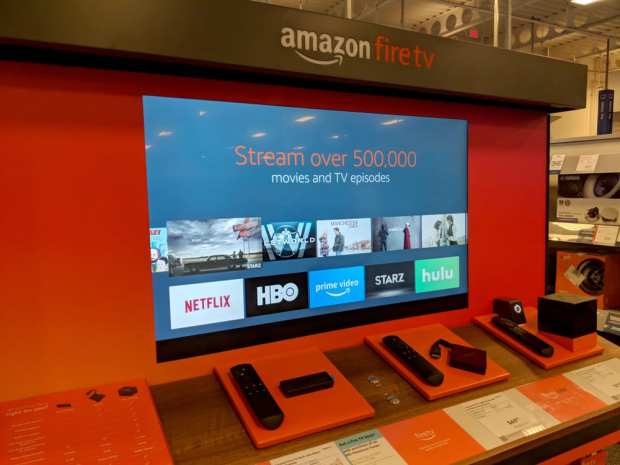Amazon Streaming Gain Comes Amid Bigger Industry Changes

2020 is supposed to be a year for streaming services, given the emerging and revised options out there, as well as the cultural trend of consumers cutting the cord in hopes of saving money and paying only for TV content they truly want. And new figures regarding Amazon TV could help shed at least a bit of new light on that larger and developing situation.
According to a report, the Fire TV platform from the eCommerce operator “now has over 40 million users. That’s up from the 34 million it claimed in May 2019 and more than the 32.3 million active accounts Roku reported during its Q3 2019 results this past November.” As the report notes, Roku and Amazon TV are competitors in the streaming world.
As well, the report adds, “Roku’s ‘active accounts’ figure describes those accounts where users have streamed at least once during the past 30 days, but Roku notes that one Roku account may be shared by multiple members of the same household. However, the same can be said for Fire TV, which, like Roku, doesn’t offer an easy interface for switching between different user profiles in order to create a personalized home screen or watch list.”
Other Changes
This news comes not only amid ongoing and anticipated changes in the world of streaming, but also as consumers’ homes become a bigger center of commerce, entertainment and payments.
For instance, Amazon, Google, Apple and the Zigbee Alliance unveiled a new working group to promote the adoption of a new, royalty-free connectivity standard to make smart home products more compatible with security as a design tenet. Zigbee Alliance board member companies like IKEA, Samsung SmartThings and Silicon Labs, among others, have also joined the working group to make contributions to the effort, according to the Dec. 18 announcement.
The idea is to promote compatibility for consumers and to make smart home development simpler for manufacturers. The group’s activities center around the idea that smart home devices should be seamless, reliable and secure. Interoperability, compatibility and open sources are among the lodestones for this effort.
According to the announcement of the creation of this effort, “by building upon internet protocol (IP), the project aims to enable communication across smart home devices, mobile apps and cloud services, and to define a specific set of IP-based networking technologies for device certification.”
Google’s Move
That’s not all that’s happening in the world of streaming and its associated parts. Entertainment has also been taking on new forms as social media and tech evolve.
Those looking for a way to keep up with what movies they want to watch will have a new Google tool to do so, according to the website 9to5google. The new feature will allow users to add TV shows and movies to categories for things they’ve watched and want to watch. If the content is available on YouTube, there will be a “Watch Now” button next to the title. If it’s in theaters, there will be a link to buy tickets.
The function will allow users to add titles to a “Collection” page, where they can scroll through a list of items with pictures. According to 9to5google, the service is tied to Google’s broader bookmark feature, spanning Search, Maps and the internet.
Additionally, Google announced a game streaming service in March that allows users to stream games from the internet to their own devices, as opposed to spending money on new game systems and other accessories.
Subscription commerce, too – part of the streaming world – is undergoing general change and development. According to PYMNTS’ Subscription Commerce Conversion Index, in Q2 2019, the subscription marketplace competition got tighter, with fewer new providers entering or leaving compared to previous quarters.
Consumers might be maxed out on subscription commerce, but that hasn’t stopped startups from making a go of it in new and unexpected ways. The latest Recurring Global Payments Tracker details the efforts made by subscription commerce companies and looks at emerging models across verticals.
There are many moving parts in streaming, and the pace of change isn’t likely to slow anytime soon.
